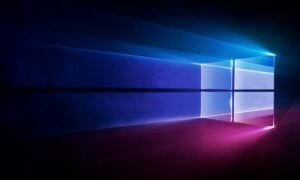The world of operating systems is ever-evolving, and Microsoft, as a frontrunner in this domain, constantly strives to provide users with the best computing experience. Windows 10 and Windows 11 are two major releases that have left a significant impact on users and businesses alike. As users face the decision of sticking with the reliable Windows 10 or embracing the new features of Windows 11, it is essential to make an informed choice. In this comprehensive comparison, we will delve deeper into the key differences between Windows 10 and Windows 11, exploring their unique features, system requirements, user interface changes, productivity enhancements, and the factors that users should consider while deciding between the two.
Windows 10 – The Trusted and Familiar
Launched in July 2015, buy Windows 10 brought significant improvements over its predecessor, Windows 8, and quickly became the go-to operating system for millions of users. One of the key strengths of Windows 10 is its familiarity, catering to users who sought a return to the classic Windows experience.
Key Features of Windows 10
- Start Menu Evolution: Windows 10 reintroduced the Start Menu, blending the traditional Start Menu from Windows 7 with Live Tiles from Windows 8. This combination offers a user-friendly interface with quick access to frequently used applications and dynamic information.
- Cortana Integration: With Windows 10, Microsoft introduced Cortana, the digital assistant, to help users perform tasks, search the web, and manage their schedules using voice commands. Cortana added a new dimension to productivity by enabling users to interact with their devices more naturally.
- Continuum for Hybrid Devices: Windows 10 embraced the growing trend of hybrid devices, like 2-in-1 laptops and tablets. Continuum automatically adjusted the user interface to suit the device’s form factor, making it easy to transition between tablet and desktop modes.
- Virtual Desktops: Windows 10 introduced the concept of Virtual Desktops, allowing users to create multiple desktop environments for better organization and multitasking. This feature proved to be particularly useful for users juggling multiple tasks and projects.
- Microsoft Edge: Windows 10 debuted Microsoft Edge, the modern and faster web browser, as a replacement for Internet Explorer. Edge brought improved performance, security, and built-in annotation tools for web pages.
Windows 11 – The Next Generation of Innovation
Unveiled in June 2021, Windows 11 marks a significant leap forward, showcasing Microsoft’s commitment to refining the user experience and productivity. While retaining some elements of familiarity from Windows 10, Windows 11 introduces several new features and visual changes to elevate the user experience.
Key Features of Windows 11
- Redesigned Start Menu: Windows 11 features a centered Start Menu, a departure from the left-aligned design of its predecessor. The new Start Menu is more streamlined, ditching Live Tiles in favor of static icons for a cleaner and simplified look.
- Snap Layouts and Snap Groups: Windows 11 introduces Snap Layouts and Snap Groups to improve window management. Users can easily arrange and snap windows into predefined layouts or create custom layouts based on their preferences, enhancing multitasking capabilities.
- Microsoft Teams Integration: Windows 11 brings Microsoft Teams integration directly into the taskbar. Users can now quickly access Teams for video conferencing and collaboration, streamlining communication and teamwork.
- Direct Integration with Microsoft Store: Windows 11 offers a more straightforward and direct integration with the Microsoft Store, which now includes support for Android apps through the Amazon Appstore. This expands the app ecosystem and provides users with more options for productivity and entertainment.
- Enhanced Gaming Experience: Windows 11 focuses on improving the gaming experience, with features like Auto HDR, DirectStorage, and enhanced support for gaming peripherals. These gaming-specific enhancements aim to provide a more immersive and enjoyable gaming environment.
System Requirements and Compatibility
One crucial aspect that users must consider when choosing between Windows 10 and Windows 11 is the system requirements and compatibility.
Windows 10 System Requirements:
- Processor: 1 GHz or faster compatible processor
- RAM: 1 GB for 32-bit or 2 GB for 64-bit
- Hard Disk Space: 16 GB for 32-bit or 20 GB for 64-bit
- Graphics Card: DirectX 9 or later with WDDM 1.0 driver
- Display: 800×600 resolution
Windows 11 System Requirements:
- Processor: 1 GHz or faster with two or more cores on a compatible 64-bit processor or system on a chip (SoC)
- RAM: 4 GB or more
- Hard Disk Space: 64 GB or larger storage device
- Graphics Card: DirectX 12 compatible graphics / WDDM 2.x
- Display: >9″ with HD Resolution (720p)
Additionally, Windows 11 requires a Trusted Platform Module (TPM) version 2.0 for enhanced security. Some older devices may not meet these requirements and might not be eligible for a Windows 11 upgrade. Therefore, it is crucial for users to verify their device compatibility before deciding to upgrade to Windows 11.
Conclusion
Windows 10 and Windows 11 are two significant milestones in Microsoft’s journey of providing robust, user-friendly, and secure operating systems to users worldwide. While Windows 10 continues to be a reliable workhorse with widespread compatibility, Windows 11 represents the next generation of innovation, featuring a more modern and efficient user interface, enhanced gaming capabilities, and deeper integration with Microsoft’s productivity tools.
The choice between Windows 10 and Windows 11 depends on individual needs, preferences, and device compatibility. Users who value familiarity, broad compatibility, and long-term support may opt to stick with Windows 10, while those seeking a more modern and productivity-focused experience might consider upgrading to Windows 11.
Before making a decision, it is essential for users to conduct a thorough assessment of their hardware and software compatibility and evaluate which operating system aligns better with their workflow and future needs.



































